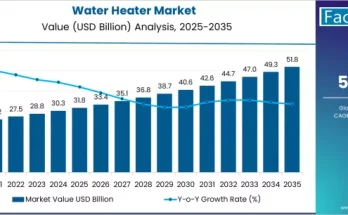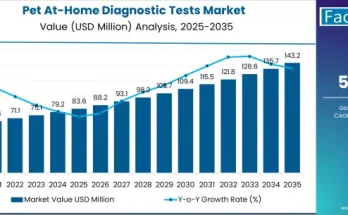The athletic footwear market reached a valuation of US$ 82.56 Billion in 2022. Furthermore, across the 2022-2032 period of assessment, growth is expected to accelerate at a 4.5% CAGR, reaching US$ 128.21 Billion. E-commerce, which involves buying and selling products and services exclusively through electronic channels, has a huge demand globally. The most well-known form of e-commerce is online shopping. It has simplified the purchasing process for consumers by making it easier and more convenient. Online shopping is more popular in developed countries, such as America and Japan, compared to developing countries such as India and China.
The current retail scenario is different from what it was ten years earlier. There is an immense athletic footwear market opportunity, owing to the emergence of e-commerce, which makes shopping simpler, easier, and more convenient. Demand for athletic footwear products is increasing rapidly, owing to usage in various conditions. Athletic footwear are products used by various consumer types such as athletes and climbers. In addition, there are fitness conscious customers, gym goers, and people who use them for mild fitness routines. Various types of athletic footwear available in the market are prepared from high quality raw materials, such as leather, foam, and plastic, which involve use of advanced chemical additives.
Escalating number of sport and fitness activities, such as aerobics, swimming, running, and yoga, along with increasing women participation in sports activities, are opening new avenues for global athletic footwear manufacturers. By adopting the trend of athleisure, key vendors are customizing their product to cater the rising demand. In addition, athleisure has become more pervasive, as it has influenced the athletic footwear choice among millennial parents. For instance, Brazil has developed a significant sporting culture. Sports are not only widely played and popular among large segments of the population, but they are also diverse in nature, thereby becoming a demand hub for the manufacturers.
Key Takeaways from the Market Study
- According to Fact.MR, a CAGR of 3% was recorded for the Athletic Footwear market from 2017-2021
- In FY 2021, the athletic footwear market reached a valuation of US$ 79.0 Billion
- The market is likely to register a Y-o-Y growth rate of 4.0% in 2022
- By product type, the running shoes segment is expected to dominate the market, documenting a 4.2% value CAGR
- As per Fact.MR’s projections, the market for Athletic Footwear in the US will likely expand at an 4% CAGR
- The Athletic Footwear market in China is expected to expand at an 3% CAGR
“The rising participation of the young population in sports, fitness activities is one of the major reasons which is pushing the growth of the Athletic Footwear Market over the analysis period,” comments an analyst at Fact.MR.
Competitive Landscape
Prominent players in the Athletic Footwear Industry are taking advantage of the rapidly increasing demand for the Athletic Footwear in various applications. To further their outreach, players are relying on collaborations, partnerships and acquisitions with existing small, medium and large-scale players. Some prominent market developments are as follows:
- In September 2021, Skechers announced the launch of the all-new Skechers GO-run Razor excess for men, which builds on the popularity of the award-winning GO-run Razor 3. The product is designed for every kind of runner, which deliver a swift and comfortable run with highly responsive, ultra-lightweight and durable hyper burst cushioning, as well as Goodyear rubber technology for enhanced traction, stability and durability.
- In June 2021, Adidas launched a golf shoe called the “Solarthon” that is both lightweight and comfortable. Further, the brand aims to introduce Solarthon in limited-edition grey, blue and white colorways. The new shoe features Adidas’ Primeblue textile upper, a recycled yarn containing at least 50% Parley Ocean Plastic, to help the company’s “End Plastic Waste” initiative.


